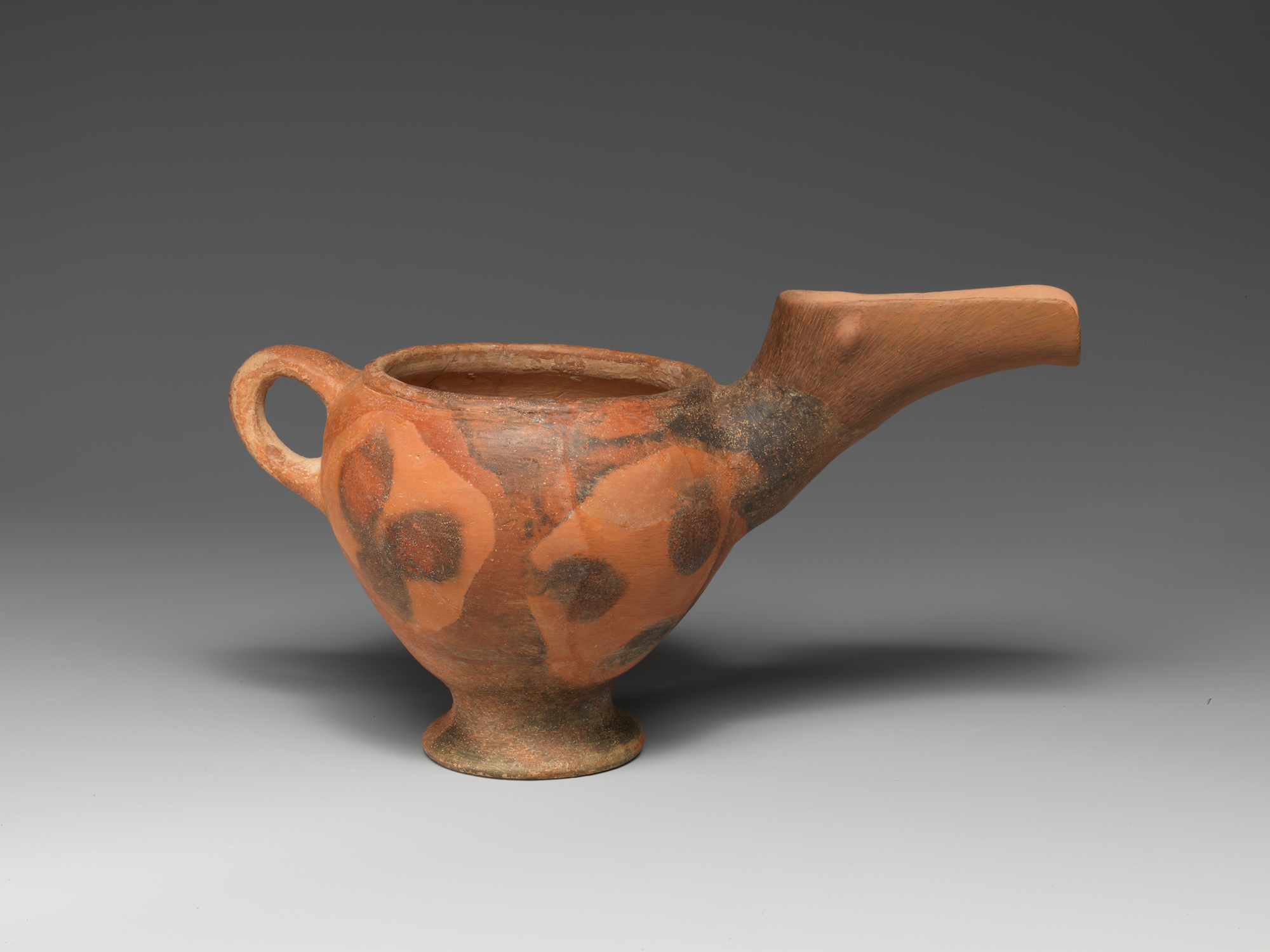Terracotta beak-spouted jar, Vasiliki ware
Vasiliki ware is named for the site where it was first discovered in Eastern Crete. Potters created extremely hot kilns to achieve a distinctive mottled effect. They coated vessels with an inconsistent mixture of diluted clay and red pigment and fired them unevenly, so the hottest areas turned black. The deliberate patterns were made by placing carbon on the surface. Such vases were distributed throughout Crete and have become the hallmark of pottery of the Early Minoan II period.
Due to rights restrictions, this image cannot be enlarged, viewed at full screen, or downloaded.
This artwork is meant to be viewed from right to left. Scroll left to view more.



